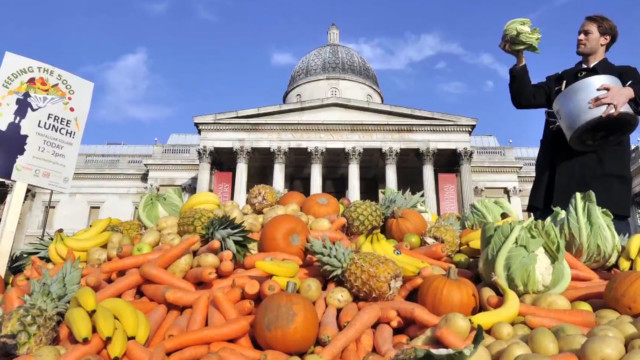It often happens that carton of strawberries in the back of the fridge grows moldy, eggs sit past their expiration date, bok choy wilts away, forgotten. At some point, these items likely end up being thrown out.
The problem of food waste is global. In America alone, 40 percent of the food produced is discarded and that’s happening throughout the entire food supply chain.

This week, CCTV America’s Liling Tan explores the scale of the problem.
Follow Liling Tan on Twitter @LilingTan

America is known as the country of plenty, so plentiful that nearly half of all the food it produces ends up uneaten and thrown away.
For an average family of four, it translates to about $15,000 lost every year, and then there’s the environmental toll.
Now, a small but growing number of companies are trying to change the game by turning waste into wealth.
In upstate New York, the trash at Ithaca Hummus, a food supplier, has become treasure for condiment-maker Sir Kensington, all because of this liquid called aquafaba.
Sir Kensington’s is buying up the aquafaba as a key ingredient in its vegan mayonnaise called Fabanaise. It’s a partnership that makes both business sense and common sense, and they’re not alone. Beer brewers are re-purposing spent grain into bread, while others are turning crab shells into fertilizer, salmon skin into wallets.
Still, this hardly makes a dent in the massive food waste problem, which isn’t just an American one.
London-based food waste expert Tristram Stuart says food is wasted along the entire food supply chain. An estimated 800 million people in the world do not have enough to eat. Feedback says that by cutting back on food waste, we can relieve pressure on world food supplies and make the global food market accessible to all.
But the burden isn’t just on businesses. It’s also on us: the consumers. The National Resources Defense Council says consumers in America are wasting more food than farms, grocery stores and restaurants.
Expert Sasha Stashwick has some tips on how we can be part of the solution.
Basil’s best stored outside the fridge in a glass of water, and strawberries best removed from the carton to prevent premature bruising.When it comes to storing leftover food, it is helpful to use individual containers and labels to keep track of the food.
The message is simple: “waste not want not” begins at home.
Liling Tan talks to Sasha Stashwick, senior advocate at Natural Resources Defense Council about food-saving tips and food waste.
 CGTN America
CGTN America
